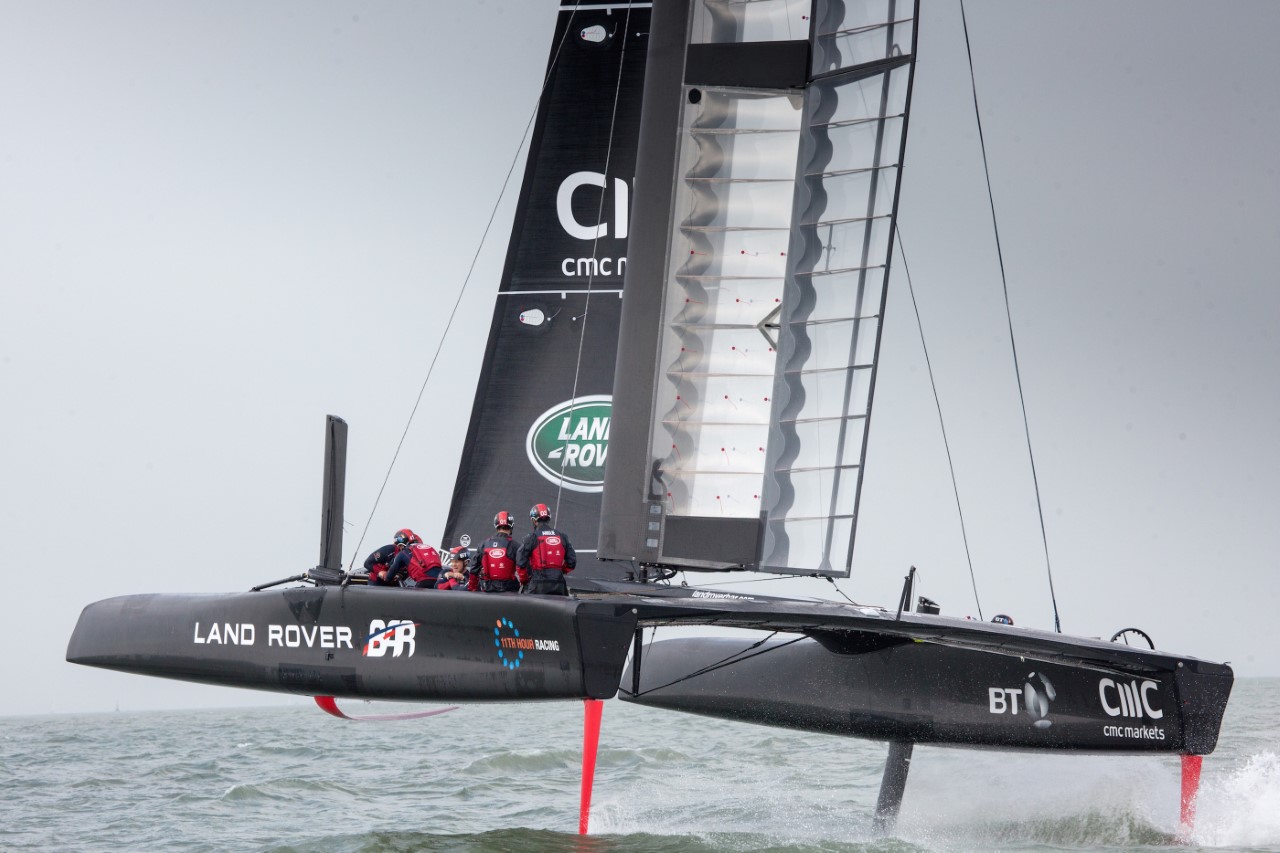

Land Rover Ben Ainslie Racing (BAR) is leaving nothing to chance in its mission to become the first ever British winner of sport’s oldest international trophy: The America’s Cup.
Sir Ben Ainslie will lead his eponymous team’s charge, assisted by a team of world class sailors, design and operations teams both in Bermuda and Portsmouth.
And there is a consortium of British companies hoping to contribute to success and showcase their wares.
BT is one of those companies, forming part of the Technical Innovation Group (TIG), along with BAE Systems, Land Rover, naval architecture firm BMT Nigel Gee and Renishaw.
“The America’s Cup isn’t simply a sailing race – we can’t expect the sailors to just pull the lines faster,” said Phil White from PA Consulting, which oversees the TIG. “It’s a technology race too. Races are won or lost on small percentages – one or two percent and very often less than that.
“Any small improvements we can make – reliability, more information – can make a huge difference and that’s what TIG tries to achieve.”
Read More: How the IoT is powering Ben Ainslie’s America’s Cup bid
BT’s contribution is unsurprisingly related to networks. It links the boat to both bases in Bermuda and Portsmouth using a combination of private 4G and a fixed connection via New York. This not only allows the team to communicate, but also enables access to cloud services like Office 365, and analyse the huge amounts of data collected from hundreds of sensors on the boat.
The private 4G network uses private spectrum in the 2043.5MHz band, separate from commercial 4G services, which will be under significant strain from spectators. This is similar in principle to 5G network slicing, although this ‘partitioning’ of cellular services will be done on the same spectrum.
Martin Whitmarsh, CEO of Land Rover BAR, told Silicon there are more than 400 sensors on board, helping the team optimise tactics and make better decisions on the water. Video and data feeds allow the team to operate a ‘virtual chase boat’ back in Portsmouth, eliminating the need to send people to Bermuda and saving the costs associated with that.
“That’s money not being spent on making the boat go faster,” said Matt Lawson, director of innovation at BT, who said the speed of the new catamarans meant it was increasingly difficult to monitor from a physical chase boat and consumed much more fuel.
However in such a difficult and fast-paced environment, getting the right information to the boat is important.
“Giving them an Excel spreadsheet on a screen is not the best way to do that,” added Lawson. “You don’t want overload the guys with information.”
This is all the more important now the number of crew members has been reduced from eight to six meaning the role of tactician has transformed to one that is required to help power the boat’s hydraulics, meaning they have less time to look around and assess the course.
Page: 1 2
New addition. Next generation foundation model, as Amazon Nova model launches to perform actions within…
Head of artificial intelligence research at Meta Platforms has announced she is leaving the social…
No decision yet, after media reports CK Hutchison was to spin off its global telecom…
Ahead of 5 April deadline, Trump is to hold White House meeting over possible investors…
Apple fined 150m euros over App Tracking Transparency feature that it says abuses Apple's market…
OpenAI to release customisable open-weight model in coming months as it faces pressure from open-source…